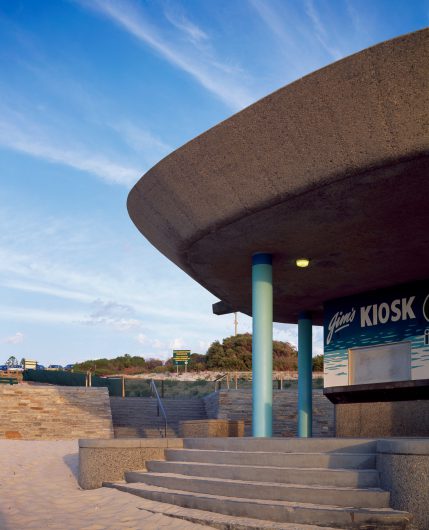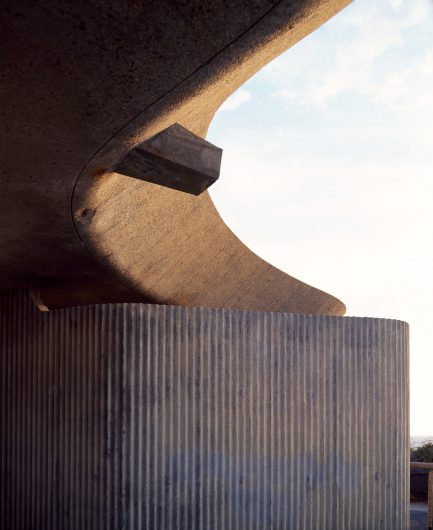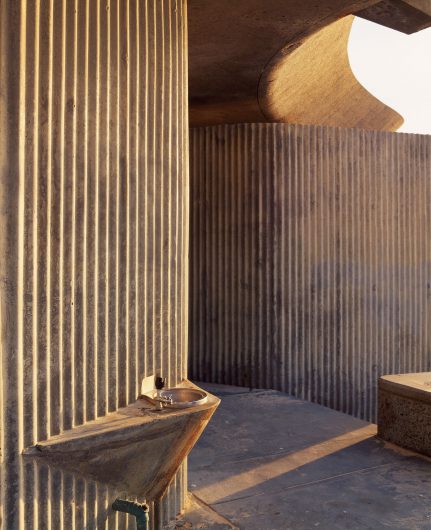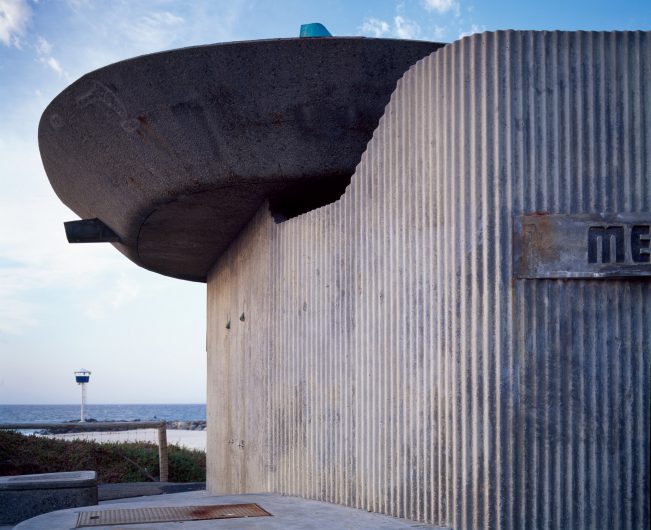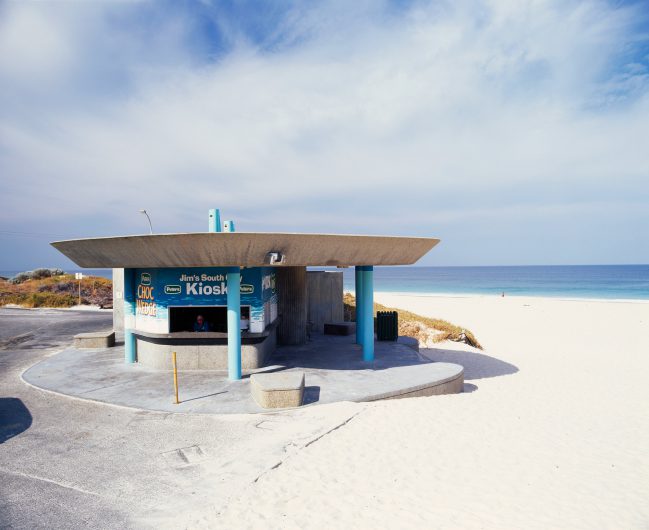The iconic concrete kiosk and change rooms at Perth’s City Beach are in danger of being demolished.
Love it or loathe it, as are often the extreme responses to the Brutalist concrete design, the building is a significant piece of Western Australia’s architectural history. The prospect of its removal has sparked a movement to preserve it.
Built in 1970, the kiosk was part of a masterplan to improve road access and public amenity to the beach between the City and Floreat groynes. The plan included car parking, lawns, trees, sea walls, a Surf Life Saving Club and five kiosks, but only three were built.
The kiosk is a good example of Brutalist architecture, a style which evolved between the 1950s to 70s. The name doesn’t stem from the look of the buildings, but derives from the French béton-brut, meaning raw concrete. It has become one of the most controversial architecture movements worldwide and buildings in its style have been described as bold, brash and heroic and even downright ugly.
Tony Brand, who was a partner at architectural practice Forbes & Fitzhardinge, designed the City Beach kiosks and clubrooms.
“I wanted harmony between the buildings, beach and the retaining wall,” Tony explains. “The buildings would be sitting in the sand on the edge of the ocean so concrete was an obvious choice because it is robust and resilient.”
The curved walls and shell-like roof demonstrate the sculptural possibilities of concrete but they are more than a poetic design gesture. Curves help strengthen the concrete and minimise cracking, as does the corrugated pattern to the walls.
Today, the concrete is brightly painted and covered in icecream signs but the original structure has not changed. However, almost 50 years of exposure to harsh coastal weather and salt from the ocean is taking its toll, with signs of corrosion in the steel reinforcing bars in the concrete proving that the building needs repair work.
Philip Griffiths, Architect and Past President of the Australian Institute of Architects WA Chapter, suggests that the Town of Cambridge could offer the place to a third party to conserve and adapt at free rental until the cost of conservation is recouped. It’s a suggestion that would save the council the cost of refurbishment and perhaps let the kiosk be made relevant for a new and imaginative use.
Footnote: For other examples of Brutalism in Perth, look to Curtin University, Hale School Memorial Hall, Perth Central Fire Station, Perth Concert Hall and Iwan Iwanoff’s homes.Two of the kiosks and the Surf Life Saving Club have already been demolished which makes it all the more imperative that this kiosk is preserved.



